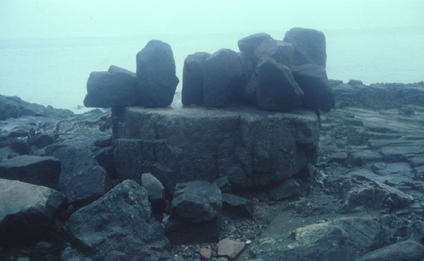We asked the sculptor Andy Goldsworthy to create a special beach piece. Andrew Graham-Dixon talked to him about it
ANDY GOLDSWORTHY has made fragile works from ice or packed snow in Kensington Gardens, in Japan and on the Arctic Circle; he has set frail constructions of stalk and twig floating in the tarns near his home in Dumfriesshire; he has worked with, among other things, driftwood, sticks and stones, dead leaves. But wherever he's worked, and whatever he's used, Goldsworthy's sculpture has always operated on the principle of built-in obsolescence. The work is destroyed by the elements, surviving only via the medium of photography.
Goldsworthy has been making sculptures on beaches for as long as he can remember. The beach is the ideal Goldsworthy location - an art gallery washed clean every day. 'My first works were made on More-cambe beach. The beach was my training ground, it set the rhythms for the way I work. The tide came in and destroyed whatever I made twice a day. I had to work to natural deadlines.'
Goldsworthy made the work at Sandy Hill in Dumfriesshire in response to a commission from The Independent. It is one of the first beach works that he has made since his return from the North Pole and, al-though beaches and arctic waste are not readily associated with one another, Goldsworthy sees the piece as a direct continuation of the works he made in the Arctic Circle. 'When I was at the Pole I was working very much with wide open spaces, lit by very intense light, and using powdery snow. I felt very much that the next step would be to work in a hot place, and that the materials there - the sand and the sun - would be curiously similiar. When I was...


